Linking Salesforce User Stories with Metadata:
A Step-by-Step Guide using Jira and AbstraLinx
February 17, 2023
Connecting Salesforce user stories with Salesforce metadata is a crucial step in creating an effective and successful software solution.
User stories capture the user's perspective and requirements, while Salesforce metadata defines the technical details of the software platform. When user stories are linked with Salesforce metadata, developers can more easily map the user's needs to the underlying functionality of the platform, ensuring that the resulting solution meets the user's expectations.
Tools like AbstraLinx make it easy to link Salesforce user stories with Salesforce metadata and even integrate stories from other project management platforms such as Jira.
In the following tutorial, we'll walk you through the process of creating user stories on Jira, exporting them as CSV files, importing them into AbstraLinx, and then linking Salesforce user stories with metadata such as: objects, Apex classes, and other metadata.
What is a Salesforce User Story?
A Salesforce user story is a simple and easy-to-understand way of capturing the needs and requirements of a user for a particular feature or functionality in Salesforce. It is usually written in a specific format that includes three key components: the user persona, the action they want to perform, and the outcome they expect. Check this blog post for more information about creating effective Salesforce user stories.
Why Link User Stories with Metadata?
Linking user stories with metadata provides several benefits, including:
- Improved traceability: Linking user stories with metadata enables you to easily trace requirements back to the specific metadata elements that support them. This improves traceability and helps ensure that all requirements are met.
- Faster development: Linking user stories with metadata can also help speed up development, as it allows developers to quickly identify the metadata elements that need to be modified to support a particular user story.
- Better collaboration: Linking user stories with metadata also facilitates better collaboration between different team members, as it provides a clear overview of the requirements and the supporting metadata.
How to Link User Stories with Metadata using AbstraLinx
Step 1: Create Salesforce user stories in Jira
First, navigate to the Jira project where you want to create your Salesforce user stories. Select the "Create" button to create a new issue.

- Select the "Story" issue type or the type that is appropriate for the project you are working on.
- Fill in the necessary information for the user story, such as the summary, description, and any relevant details.
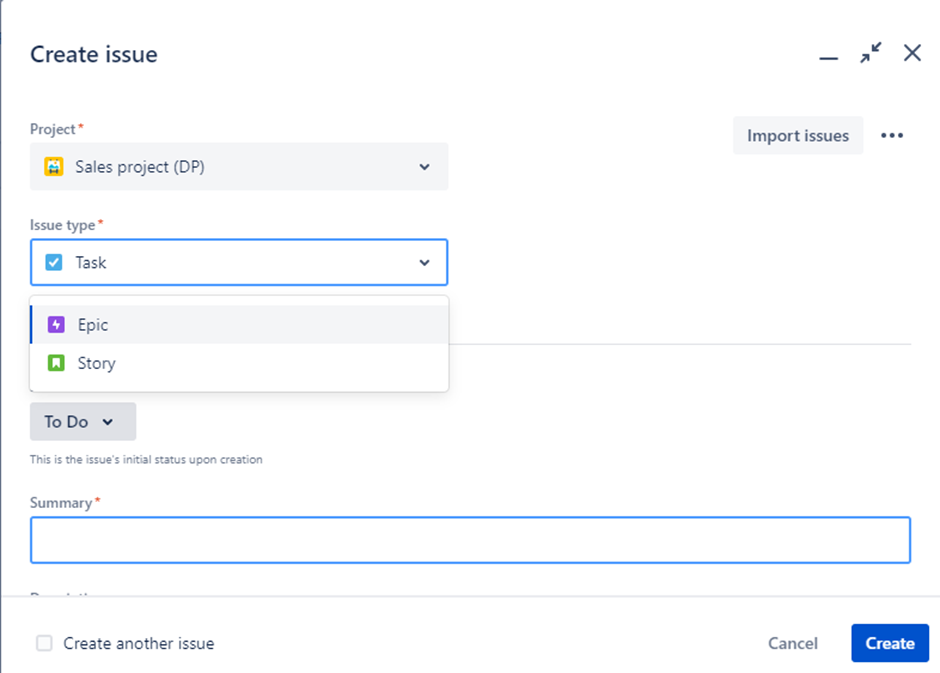
Step 2: Export the user stories to a CSV file
The next step in the process is to export the user stories to a CSV file, which can be done using Jira's built-in export feature. The CSV file can then be imported into Abstralinx for further linking to Salesforce metadata.
- Navigate to the "Filter" option at the top of the screen.
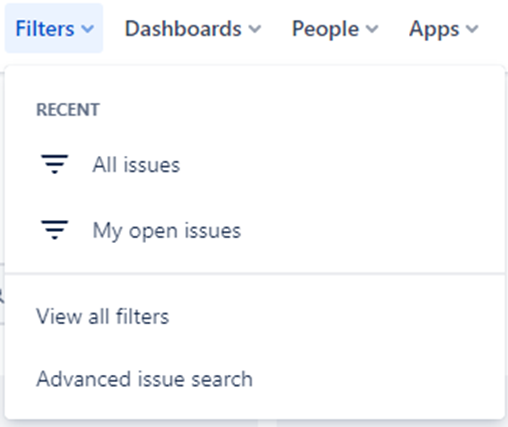
- Then, select "Advanced Issue Search" and apply any necessary filters by selecting "Story" as the type or selecting the issues directly.
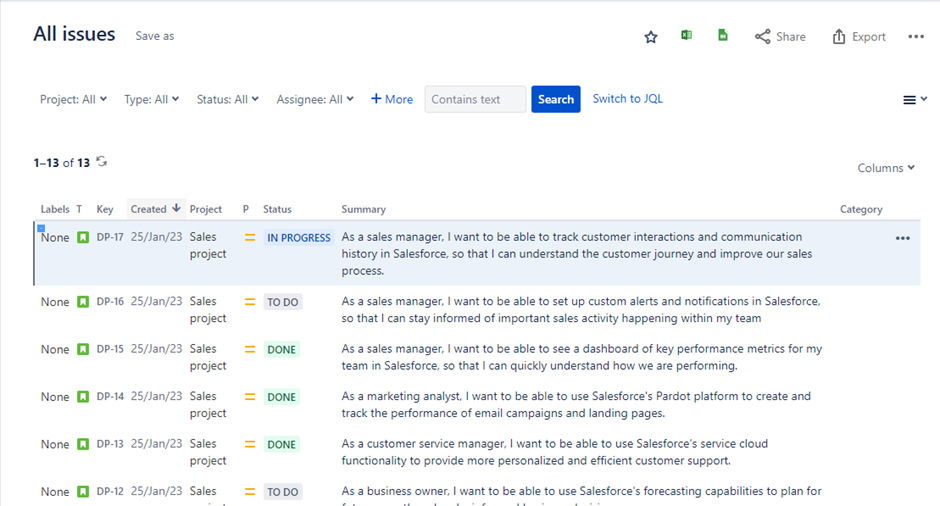
- You can now choose which columns to include in your exported CSV file by using the "columns" button and then clicking on “Done”. Columns you must include in your CSV export are Issue ID, Issue Type, Summary, Created date, Project name, Priority, Status category, and Description.
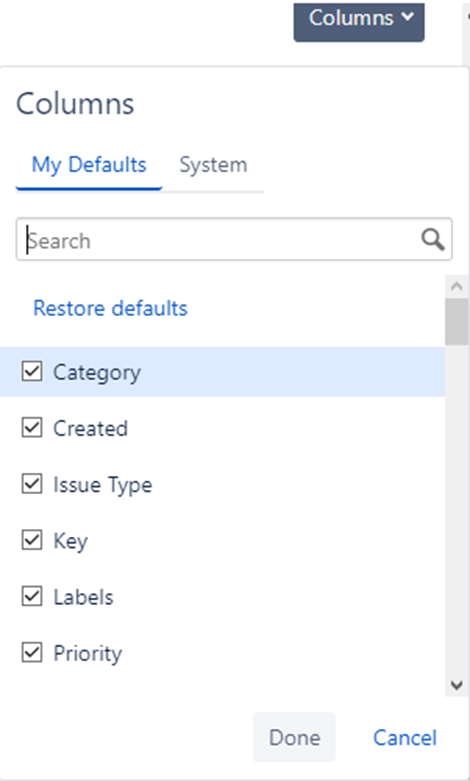
- Afterward, located in the upper right-hand corner, you will find an option to export the data as a CSV file.
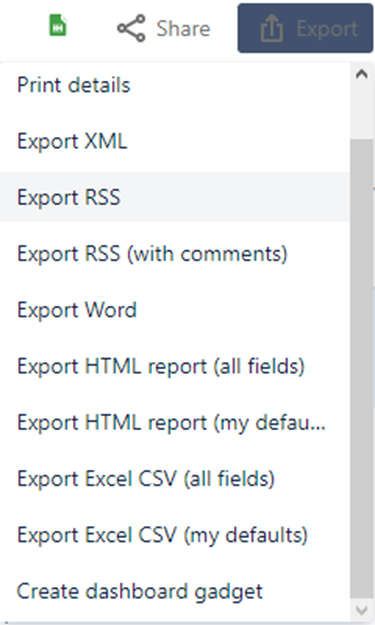
It's worth noting that there are certain limitations when exporting data from JIRA. One limitation is that JIRA only supports exporting up to 1000 issues at a time.
Step 3: Import the CSV file into AbstraLinx
You'll first need to import your Salesforce metadata into AbstraLinx. To import the metadata from Salesforce, you need to create a new org connection in AbstraLinx.
- Click on the “new connection” button from the start screen
- You may also navigate to File > Manage connections. Then, click on “Add connection” in the “Manage connections” form and fill in the required fields.
- In the following step, select the objects, triggers, and apex classes to be imported, and then click on “Import”.
Check this tutorial for more details about how to import your Salesforce org into AbstraLinx.
Once you have completed the process of importing your Salesforce metadata into Abstralinx, the next step would be to import the exported user stories from Jira. To do this, you can follow these steps:
- Navigate to “project” within AbstraLinx.
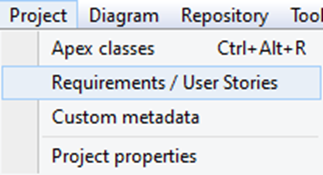
- Go to Requirements / User stories.
- Click on the "Import" button, which is typically located on the bottom left side of the screen.
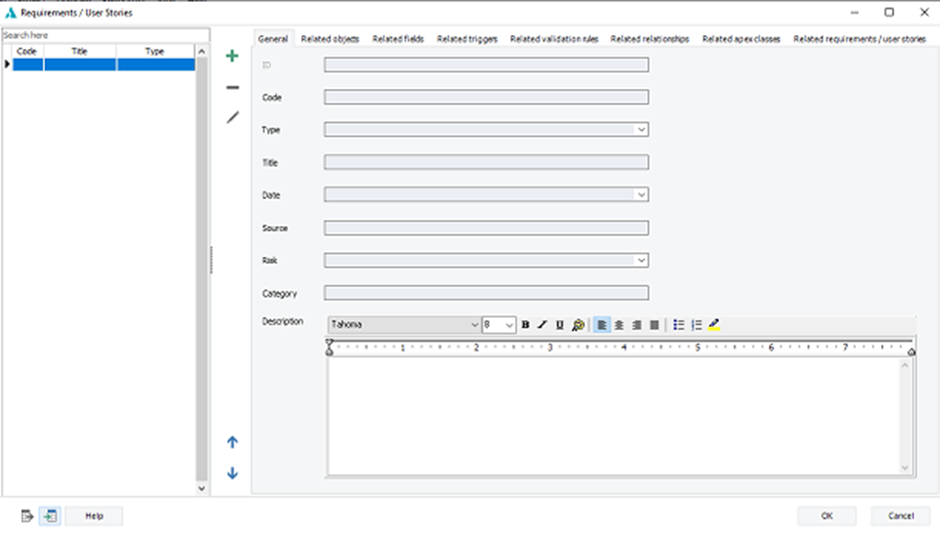
- Browse and select the exported CSV file that contains the Jira user stories you want to import.
- Click on the "Open" button to complete the process.
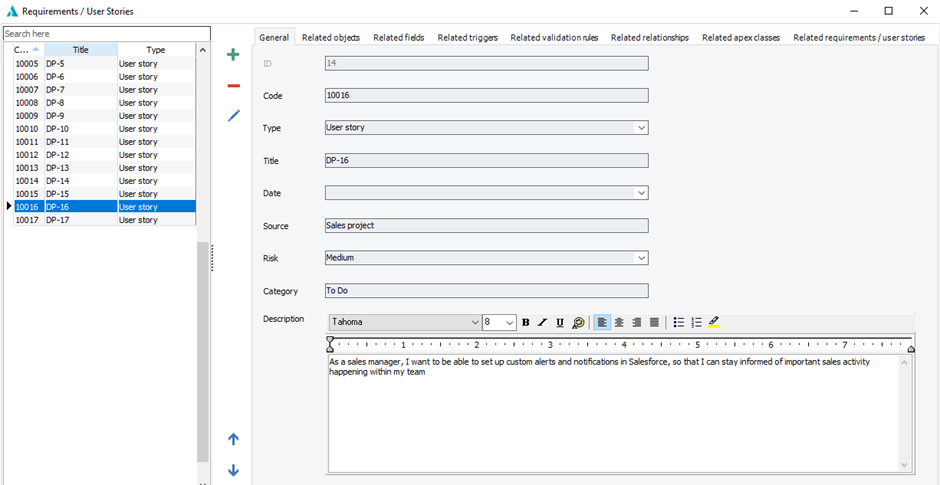
Step 4: Link the user stories to the appropriate Salesforce metadata in AbstraLinx
AbstraLinx makes it easy to link user stories to objects, such as accounts, contacts, and opportunities. For example, if you want to link a user story to an opportunity object, you can follow these steps:
- Select the user story that you want to link to the opportunity object.
- Go to the "Related objects" tab within AbstraLinx.
- Use the search box to find and select the opportunity object.
- Once the object is selected, click the forward arrow to link it to the selected user story.
An alternative way to link user stories to objects in AbstraLinx is by using the Treeview, Browser, or Diagram navigation options. To do this, you can follow these steps:
- Use the Treeview, Browser, or Diagram navigation options to find and open the object you want to link the user story to.
- Open the object by double-clicking on it.
- Navigate to the "Requirements/User Stories" section within the object.
- Select the user story you want to link from the list on the left side.
- Click on the forward arrow to link the user story to the object.
This is just an example, the same process applies to other objects such as fields, validation rules, relationships, triggers, Apex classes, and requirements.
Once you have linked your Salesforce user stories with metadata, you will be able to generate comprehensive documentation that can be used by your team to gain a better understanding of the project's requirements and the corresponding metadata elements. (Read how to generate documentation for your Salesforce org)
Read more related posts
Subscribe To Our Newsletter
Subscribe to our email newsletter today to receive updates of the latest news, tutorials and special offers!









